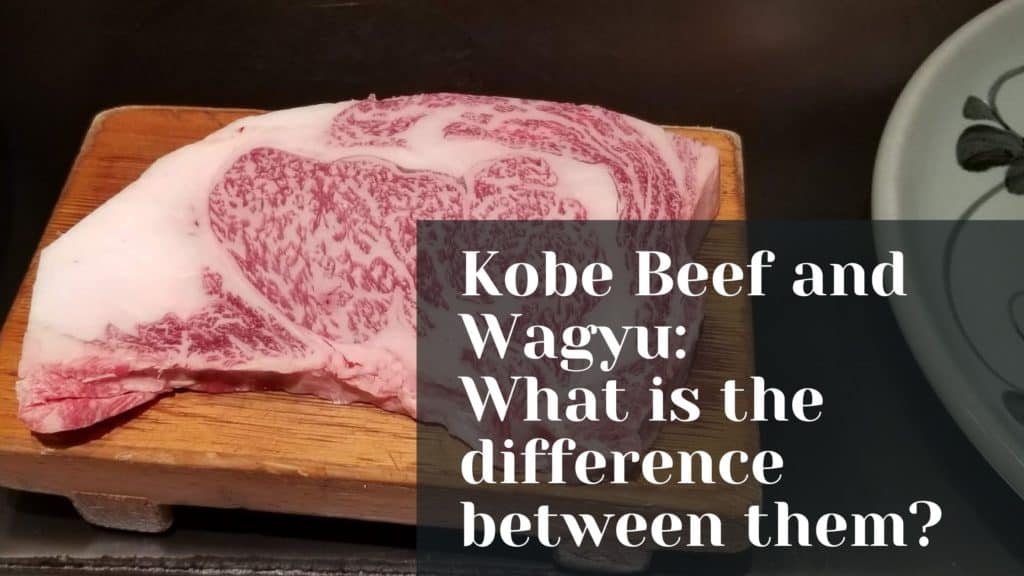If you like steak, I’m sure you’ve probably heard of “Kobe Beef”. Kobe beef is synonymous with rumors of cows being played classical music and giving them massages. My first experience having “the real deal”, was amazing but also it was a slight afterthought during a quick weekend trip to Kansai. Similar to when I made a detour in Mie to try Matsusaka beef (another of the top three Japanese kinds of beef or 三大和牛 and which is argued the best), stopping in Kobe for some Kobe beef was a must.
What makes it Kobe Beef?
In America, Kobe beef has become synonymous with 和牛 (Wagyu, literally “Japanese beef”), but wagyu is any grade A5 beef here. You can find it in the grocery stores! The Kuroge cattle are able to reach this A5 ranking and you can find it from many regions in Japan. This includes across the hills from where I live in Hayama.
However, Kobe Beef IS actually a branded name and regulated by the Kobe Beef Marketing & Distribution Promotion Association. Their website is a wealth of knowledge about what makes Kobe, Kobe. It’s also very thorough in English so don’t worry about not being able to follow. There are very strict regulations when A5 beef can actually be called Kobe. A few of them are:
- They are only a specific type of cattle and must be raised in Hyogo Prefecture
- Slaughtering must also happen in Hyogo Prefecture
- The marbling must be on point.
Teppanyaki (鉄板焼き), the Japanese Steakhouses of Japan
Not my usual style, but on the way to Shin-Kobe station to catch the shinkansen to Hiroshima, I found a highly rated restaurant on one of the restaurant apps and went with it (I usually wander until I find something).
Wakkoqu did not disappoint! Teppanyaki literally means “cooking on steel plate”. Much like you would see at Benihana or any Japanese Steakhouse in the states. However, though the cook is right there to prepare your meal especially for you, it’s not as showy. Not what I’ve seen at least, until this restaurant. There was no throwing shrimp into people’s mouths but there was a lot more showy knife work than I had seen in the past at other Teppanyaki restaurants.
The chef and staff at Wakkoqu were very friendly and also use to foreigners being so close to the station and spoke English. Though I can get by in Japanese, I don’t know that that converts over to “beef knowledge”. They had many cuts of beef on their course menus and had it not been that fact, I would not have known that Sirloin is actually the best cut for Kobe (I was going to go with the filet). Always listen to the chef!
Tip: If you’re not looking to spend a small fortune on dinner (though still a fraction of what you would pay for in the US for ACTUAL Kobe beef — of which, there aren’t many places to find, beware imposters!), go for lunch, the set meals are much more reasonable!
My 180g sirloin set came with an appetizer, soup, coffee and bread or rice. 180g is about 6 oz, another helpful conversion factor to know. They can also fry you up some garlic rice like you would see in a Japanese Steakhouse in the states but I’d had a big lunch and wanted to enjoy my beef! A nice red wine to accompany it was the icing on the cake!
Wakkogu Japanese Teppanyaki, a Kobe Japan Steakhouse

Sitting at the counter, the teppan grill wraps the whole way around

First, an appetizer of sashimi

The course doesn’t actually list a salad but this was delicious!

Mushroom and cream soup, though I love the mushroom broth you normally get in the states at Japanese steakhouses, this was better

The beef was presented before hand. Look at all that yummy marbling!

There were also assorted veggies which were cooked with a chunk of the beef fat.

The beef!! And less importantly, the baguette, but it was also tasty.

Finish it all off with some delicious coffee
Have you had the privilege to try the real deal?
There’s more to Kobe then just the beef, check out somethings to do in the area.
